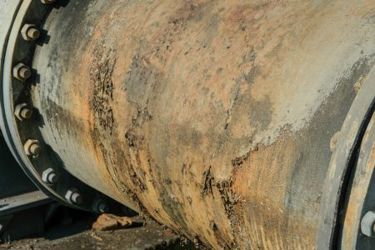Challenges In Repairing Leaking Pipes In Aging Urban Water Systems
By Emily Newton

Worldwide, nations are tackling critical infrastructure. Many of these systems are reaching the end of their lifecycles, leading to pollution, water waste, and inefficiencies. Water and wastewater employees carry a monumental burden in retrofitting and upgrading these mechanisms at such immense scales. Fortunately, solutions are available to expedite the work and better citizens’ lives.
Identifying Leak Locations
Aging water systems could have been installed more intuitively. They are cumbersome to navigate, making small yet powerful leaks hard to detect. It could require an effort from a more experienced professional to identify the source of thousands of gallons of losses. Typically, workers manually excavate or make educated guesses about where the problem might be.
These conventional techniques allow problems to be exacerbated. Now, companies are deploying acoustic leak detection equipment to discover the source faster and with greater confidence. Workers can use microphones, fiber-optic sensors, noise loggers, and accelerometers to find where water is escaping within 20 to 30 centimeters of accuracy.1 They can get closer to the problem’s center without finagling with pipes and controllers not needing attention.
Pipe Corrosion And Material Integrity
Rusting and corrosion are natural side effects of aging water infrastructure. The structural integrity issues often warrant full replacements or careful reworking by implementing new pieces via pipe welding. Both are complex and can cause disruptions or safety hazards.
Conventional methods use destructive technologies, causing more damage than necessary to identify the scope of the concern.
Nondestructive testing is one of the best ways to find corrosion without breaking apart everything in the pipeline. It usually uses ultrasonic and electromagnetic particle tests to scan equipment for defects and continuity errors.2 The clarity of information will prevent waste from unnecessary repairs and hasten replacement timelines.
Limited Access And Confined Spaces
The infrastructure and wastewater sectors require employees to work within limited spaces and face other logistic challenges. Repair crews may have to put themselves in dangerous situations to reach a leak or replace a part.
Considering accessibility in the future is crucial for workers and streamlining water infrastructure layouts. Replacements and repairs should leverage modern blueprints to form an easier space to work in for the future.
This will make these jobs accessible to a wider array of workers. Additionally, companies can invest in specialized tools to give staff extra leverage, such as supervisory control and data acquisition (SCADA), extendable inspection cameras, or remote-controlled robotics. Case studies in Western Switzerland and Northern California demonstrated how SCADA could remotely monitor inflow and infiltration with minimal intervention.3
Disruption To Service
Not every leak is a quick patch job. They appear in the U.S. around every two minutes, causing losses of 6 billion gallons of water daily.4 Sometimes, repairs can cause customers to lose consistent water access for days. This interruption leads to widespread dissatisfaction and pressure on the workers. The inconvenience is a practical and mental challenge for industry workers, as they have to work as fast as possible to avoid public relations concerns while ensuring quality control.
Designing more thorough communication protocols is essential for preventing unexpected upsets. Companies can inform those connected to the system how their accessibility or bills might be affected because of the leak and its repairs.
Customer relations programs are helpful for automating bulletins for households and businesses alike. The application can send real-time updates as repairs progress, shortening or delaying the restoration schedules. These maintain customer expectations.
Supplementing Labor And Allocating Training
The water sector, like many trades, is experiencing a labor shortage, with around 30% to 50% retiring in the next 10 years.5 This bottleneck leads to overworked staff with little time for professional development and education. These individuals need training to make them more adept at specialized and digital skills, primarily with modern devices. The knowledge gaps between older and younger workforces also cause disparities, as they have different mindsets on how to tackle a leak.
Businesses should craft internal seminars or outsource educational opportunities for workers to learn more about the next generation of leak repair and the future of water systems. These will equip them with the foundations they need to go into a job with the right tools and ask the most beneficial questions to guide their actions.
Seeking contractors while upskilling existing staff or incorporating automation are straightforward ways to open time for people to fill schedules with learning opportunities.
Budget Constraints And Funding
Public water entities could have tight budgets, and fixing sizable leaks rapidly is not an option. The aging infrastructure would then remain unattended, allowing issues to become worse while companies seek funding sources.
Corporations merely need to get creative with how they find their investments. State and federal grants are available, such as the Drinking Water Grants in the U.S.6 Public-private partnerships are always beneficial, especially for related sectors relying on consistent and clean access to public water.
A diverse portfolio of funding sources will be essential for long-term planning, as water system modernization will take years. Having several avenues will make organizations more stable and informed when planning projects based on risk assessments.
So Long, Leaks
While water workers encounter these hurdles daily, modern technology and innovation are making them easier to cope with. They empower professionals to learn new skills and make workflows more intuitive. They also boost transparency with customers so they can stay in the loop on how long leak repairs take. Every water utility and partner should adopt these strategies to make the transition to modern infrastructure more considerate and swift.
Resources:
- https://www.sciencedirect.com/science/article/abs/pii/S0926580522000991
- https://walhonde.com/blogs/news/pipe-fabrication-quality-control
- https://revolutionized.com/scada-system-for-water/
- https://www.amcsgroup.com/blogs/a-water-utility-problem-how-ageing-infrastructure-impacts-us-all/
- https://www.bloomberg.com/news/features/2024-12-20/america-needs-more-water-workers-but-many-don-t-even-know-the-job-exists
- https://www.epa.gov/ground-water-and-drinking-water/drinking-water-grants
Emily Newton is an industrial journalist. She regularly covers stories for the utilities and energy sectors. Emily is also editor in chief of Revolutionized (revolutionized.com).
